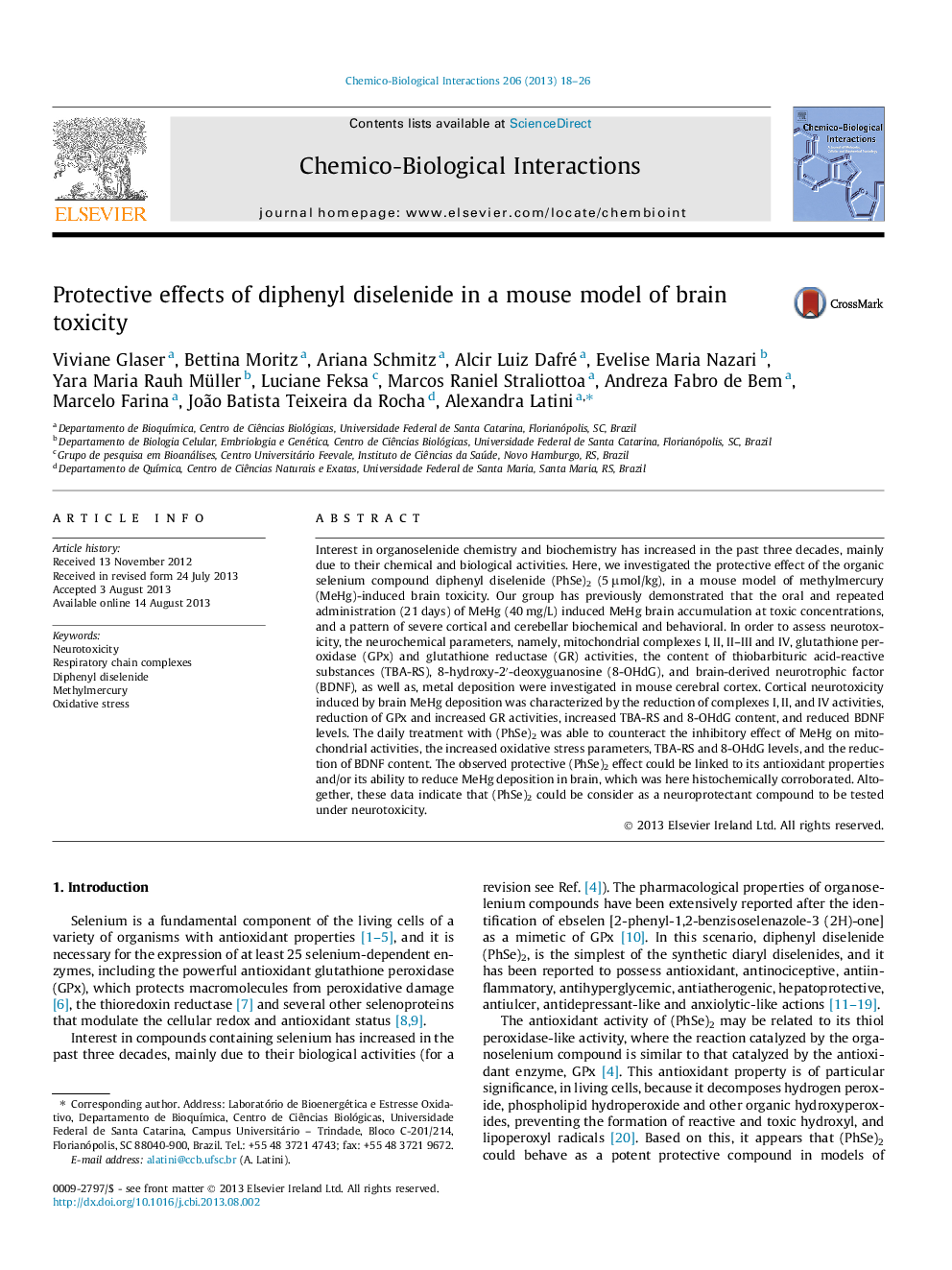| Article ID | Journal | Published Year | Pages | File Type |
|---|---|---|---|---|
| 5848172 | Chemico-Biological Interactions | 2013 | 9 Pages |
Abstract
Interest in organoselenide chemistry and biochemistry has increased in the past three decades, mainly due to their chemical and biological activities. Here, we investigated the protective effect of the organic selenium compound diphenyl diselenide (PhSe)2 (5 μmol/kg), in a mouse model of methylmercury (MeHg)-induced brain toxicity. Our group has previously demonstrated that the oral and repeated administration (21 days) of MeHg (40 mg/L) induced MeHg brain accumulation at toxic concentrations, and a pattern of severe cortical and cerebellar biochemical and behavioral. In order to assess neurotoxicity, the neurochemical parameters, namely, mitochondrial complexes I, II, II-III and IV, glutathione peroxidase (GPx) and glutathione reductase (GR) activities, the content of thiobarbituric acid-reactive substances (TBA-RS), 8-hydroxy-2â²-deoxyguanosine (8-OHdG), and brain-derived neurotrophic factor (BDNF), as well as, metal deposition were investigated in mouse cerebral cortex. Cortical neurotoxicity induced by brain MeHg deposition was characterized by the reduction of complexes I, II, and IV activities, reduction of GPx and increased GR activities, increased TBA-RS and 8-OHdG content, and reduced BDNF levels. The daily treatment with (PhSe)2 was able to counteract the inhibitory effect of MeHg on mitochondrial activities, the increased oxidative stress parameters, TBA-RS and 8-OHdG levels, and the reduction of BDNF content. The observed protective (PhSe)2 effect could be linked to its antioxidant properties and/or its ability to reduce MeHg deposition in brain, which was here histochemically corroborated. Altogether, these data indicate that (PhSe)2 could be consider as a neuroprotectant compound to be tested under neurotoxicity.
Related Topics
Life Sciences
Environmental Science
Health, Toxicology and Mutagenesis
Authors
Viviane Glaser, Bettina Moritz, Ariana Schmitz, Alcir Luiz Dafré, Evelise Maria Nazari, Yara Maria Rauh Müller, Luciane Feksa, Marcos Raniel Straliottoa, Andreza Fabro de Bem, Marcelo Farina, João Batista Teixeira da Rocha, Alexandra Latini,
